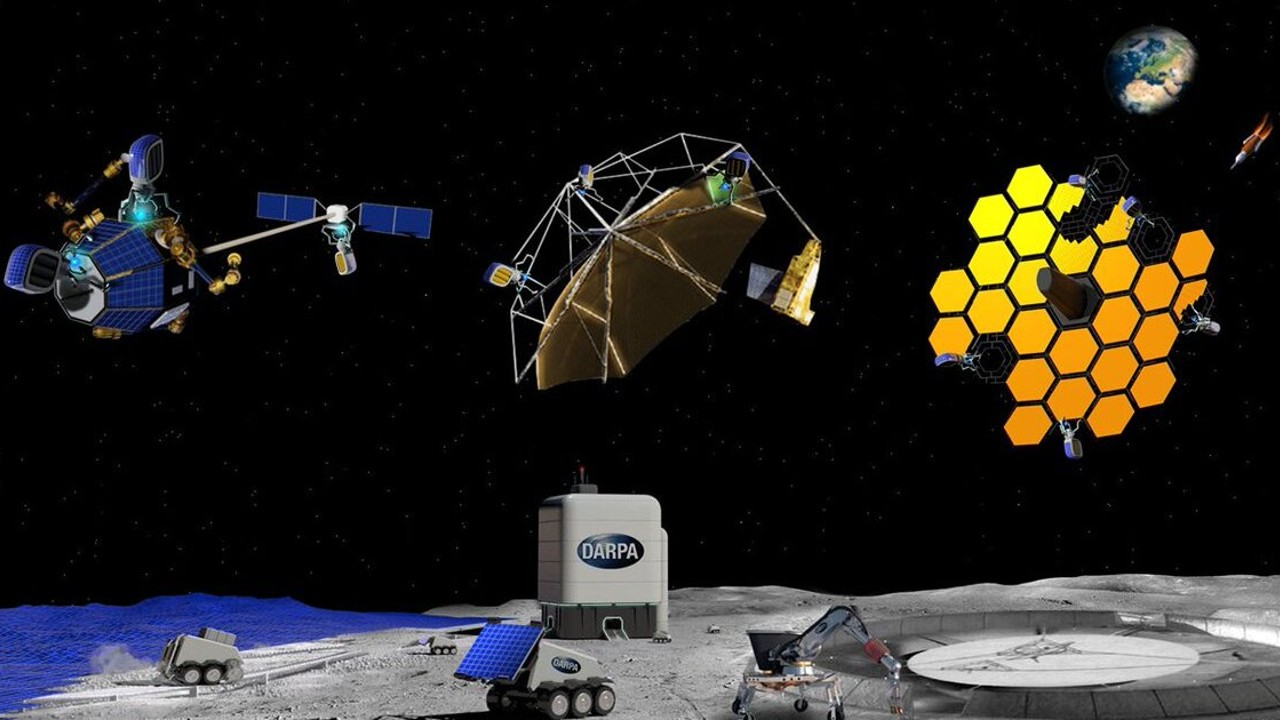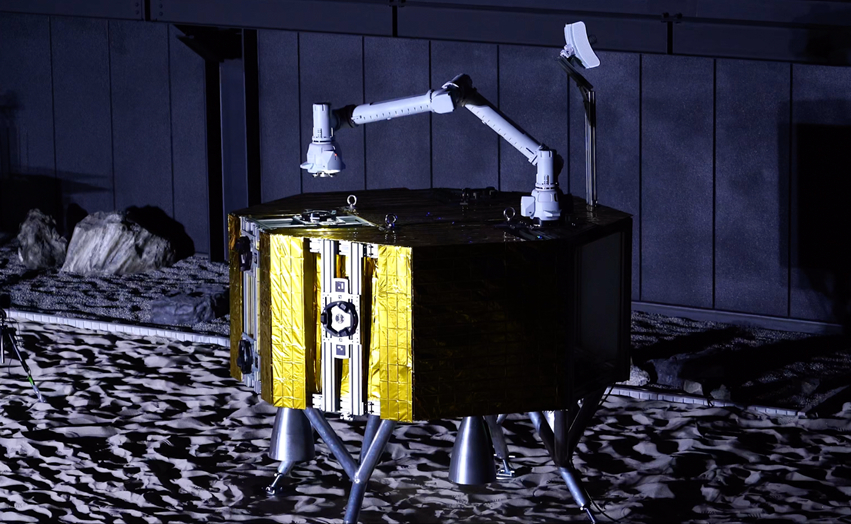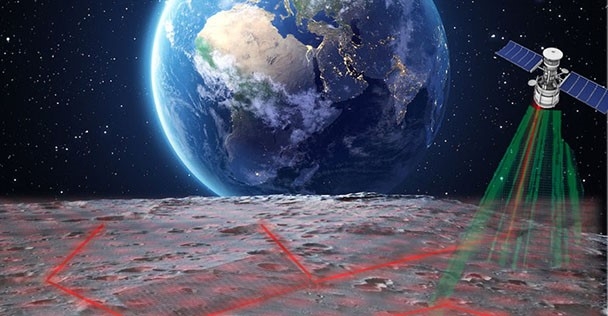Why is there so much military interest in the moon?

"Something strange is happening about the unwarranted attention on the moon."

Over the last few years, the Defense Advanced Research Projects Agency, better known as DARPA, has increasingly zeroed-in on the moon.
A trio of proactive DARPA undertakings looking to advance technologies for use on the moon has been welcomed in some quarters. Back in 2021, DARPA kick-started its Novel Orbital moon Manufacturing, Materials, and Mass Efficient Design (NOM4D) program. Last month, DARPA threw in some "LOGIC" into the mix via the Lunar Operating Guidelines for Infrastructure Consortium, or LOGIC for short. DARPA has also initiated the 10-Year Lunar Architecture (LunA-10) Capability Study to spur the development of an integrated future lunar infrastructure for "peaceful U.S. and international use."
A DARPA spokesperson told Space.com that the LunA-10 capability study and the NOM4D program are separate but complementary efforts. "LunA-10 is focused on efficient interoperability of key network nodes for a vibrant, future, lunar economy, whereas NOM4D is focused on breaking free from launch mass, size, and vibration limitations to enable designing and building very large structures, such as antennas and solar arrays, in orbit," the spokesperson stated.
But with so much moon technology research coming from an agency overseen by the U.S. Department of Defense, it begs the question: Could such initiatives trigger worries and spark counter-actions by other nations to install military might on the Earth's moon?
Related: DARPA wants new ideas for space weapons
Carefully calibrated
DARPA's multi-pronged work appears to mesh with the United Nations Outer Space Treaty of 1967 that calls for the moon and other celestial bodies to be used exclusively for peaceful purposes. There's also the U.S.-led Artemis Accords that reinforces peaceful use of the moon by establishing norms of behavior, as espoused within the UN Outer Space Treaty. On Nov. 30, the Republic of Angola became the 33rd country worldwide and the third in Africa to sign the Artemis Accords.
"DARPA's project seems very carefully calibrated to catalyze a successful commercial lunar industry within a decade, which is clearly a peaceful activity," said Peter Garretson, a senior fellow in defense studies at the American Foreign Policy Council. He is a well-regarded strategy consultant who focuses on space and defense and co-authored "Scramble for the Skies - The Great Power Competition to Control the Resources of Outer Space" (Rowman & Littlefield, 2020).
Breaking space news, the latest updates on rocket launches, skywatching events and more!
"As such, DARPA itself is not doing anything on or near the moon, but rather helping industry to create interoperable standards which will aid in deconfliction, advance sustainability, and advance standards to enable emergency assistance," said Garretson.
Moreover, Garretson said that DARPA has been clear that it will be transparent in releasing its results. DARPA is working closely with NASA, he said, to directly assist NASA's "stretch goals" in their moon-to-Mars objectives.
Self-sustaining industry
"But what is especially beneficial is that, while NASA typically concentrates on exploration and science and is never confident of its mission to catalyze industry, DARPA is unapologetic in attempting to catalyze a self-sustaining industry," Garretson said, and both DARPA's LunA-10 and NOMAD seek to realize the White House-generated National Cislunar Strategy.
Garretson said it is important to note that no Department of Defense (DoD) agency — DARPA, Space Force, Air Force Research Laboratory) has articulated any plans or programs where the DoD itself would engage in any surface activity on the moon, "and this is certainly true of both LunA-10 and NOM4D. Both advance the technology and retire technical risk to enable civil and commercial actors, and all their activities take place here on planet Earth with no flight manifest at all," he concluded.
Dominating the domain
In the meantime, however, concern over what non-U.S. moon players may be contemplating is on the rise.
For instance, in its 2023 report to Congress released last month, the U.S.-China Economic and Security Review Commission observed that "China seeks to control access to the moon for strategic aims."
The report states that Beijing is working to establish a long-term presence in space, "which it seeks to accomplish by first dominating the cislunar domain" - the space between Earth and the moon.
Noted by the Commission is U.S. military belief that cislunar space is an important domain, one that allows the United States to place its national security space assets beyond low-Earth orbit and geosynchronous orbit and to establish infrastructure that will enable long-term presence on the moon and elsewhere.
Citing several experts, the report points to primary security concerns of China's lunar exploration program that center on use of orbits around the moon, such as the Earth-moon L2 Lagrange point. Placing a satellite in L2 halo orbit could allow China to fly to the far side of the moon and attack U.S. satellites in geosynchronous orbits, according to an analyst cited in the document.
Militarily pointless
But not all experts agree. "It's not very useful to use the moon in any military purposes," said Bleddyn Bowen, an associate professor in astropolitics and space warfare at the University of Leicester's School of History, Politics, and International Relations in the United Kingdom.
Bowen authored "Original Sin - Power, Technology and War in Outer Space," (Hurst, 2022), detailing a world order shaped by spacepower and the peril of space warfare.
"I think the moon is going to get busy. Then, yes, there will be need for more infrastructure to support and coordinate traffic, communications bandwidth, and maybe actual compliance with the [United Nations] Outer Space Treaty as interpreted by whoever is doing the monitoring," Bowen told Space.com. "But the moon is militarily pointless, and I hope it stays that way."
Political optics
That said, having military organizations, such as DARPA, develop emerging technologies for the moon could be sending a wrong message. It's a matter of "political optics" and "political messaging," Bowen said.
"The danger is ending up creating a self-fulfilling prophesy by bringing in possible military fears and interests in the moon. That just might prod the Chinese to respond in a similar way," added Bowen. If NASA is taking the lead or private firms on the space agency's behalf, "then it's more obviously civilian in nature. You avoid a lot of needless militarizing risk," Bowen said. "Most people want to keep the moon free from conflict if possible."
As for the U.S. Space Force turning its attention moonward, Bowen sees that as a distraction. "The Space Force has a lot of work to do in Earth orbit and supporting U.S. military forces on Earth. That's where the Space Force focus needs to be," he said.
Where the Chinese do present actual threats to U.S. interests "is on Earth, in orbit, not on the moon," Bowen concluded.
The new abnormal
Daniel Deudney is a professor of political science and international relations at Johns Hopkins University. He is also author of Dark Skies: Space Expansionism, Planetary Geopolitics, and the Ends of Humanity (Oxford University Press, 2020).
As for military interest in cislunar space and the moon, "I think it is the 'new abnormal,' back to the worst of the 1950's," Deudney told Space.com
Deudney said he was struck by NASA's moonbase enterprise, the notion of extracting water from shaded craters for rocket fuels. Indeed, that vision is on the shady side without independent experts looking at the feasible cost and consequences of such an enterprise.
"It's extremely dubious on its face and vastly more expensive than they think or are telling anyone," Deudney said. "It strikes me as an insane use of dollar resources to squeeze a little water out of these craters. We are facing growing droughts from climate change here on Earth."
But Deudney said he's not opposed to some type of Antarctic-type base on the moon, one that's established for scientific purposes.
"It should be an international project, the next step from the International Space Station. Let's hold in abeyance resource claims and various exclusion zones as set out in the Artemis Accords. We should be doing science and a systematic surveying of the moon jointly with other nations before we start extracting anything," Deudney said.
Ownership of the moon
"Something strange is happening about the unwarranted attention on the moon," said Paul Szymanski of the Space Strategies Center, co-author of a forthcoming book, "The Battle Beyond: Fighting and Winning the Coming War in Space" (Amplify Publishing, 2024).
"For my entire 50 year career no one I knew was particularly interested in it [the moon], but now there is extreme attention," Szymanski said.
In the 1970's NASA asked the Air Force if they wanted a base on the moon, and they said no, Szymanski told Space.com. "Yet now, I personally know of companies planning on providing cell phone service on the moon and the Air Force Research Lab is developing several programs, such as space surveillance for the far side of the moon. None of this makes sense, unless there is some other not publicly known factor that has changed everyone's attitudes."
Szymanski said he theorizes that China will abrogate the 1967 Outer Space Treaty just before landing their first astronauts on the moon.
"They will then declare ownership of the entire moon, like the Pope did centuries ago declaring Spain and Portugal owned the entire Western hemisphere. Good luck defending all of that!"

Leonard David is an award-winning space journalist who has been reporting on space activities for more than 50 years. Currently writing as Space.com's Space Insider Columnist among his other projects, Leonard has authored numerous books on space exploration, Mars missions and more, with his latest being "Moon Rush: The New Space Race" published in 2019 by National Geographic. He also wrote "Mars: Our Future on the Red Planet" released in 2016 by National Geographic. Leonard has served as a correspondent for SpaceNews, Scientific American and Aerospace America for the AIAA. He has received many awards, including the first Ordway Award for Sustained Excellence in Spaceflight History in 2015 at the AAS Wernher von Braun Memorial Symposium. You can find out Leonard's latest project at his website and on Twitter.


